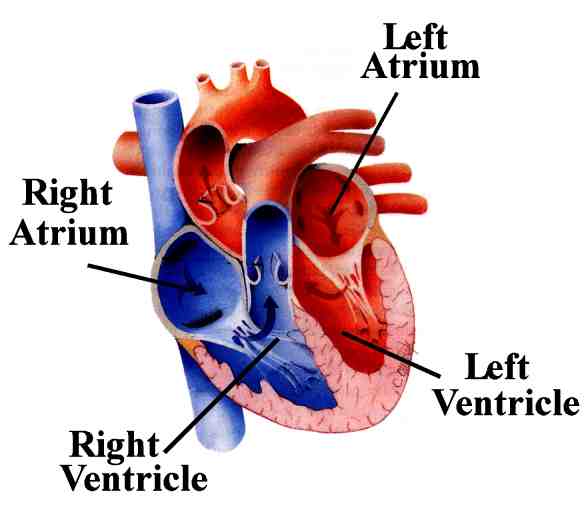Hi! I am the heart. I am a part of the circulatory system. I pump blood throughout the body so that oxygen and nutrients can get to the organs and tissues that need them, and so that cell waste can be removed. I am located in the center of the chest, behind the sternum and inside the rib cage. I am about the size of a fist. My main parts are the atriums, the ventricles, and the valves. The left atrium is a hollow chamber that collects oxygen-rich blood to send to the left ventricle. The right atrium is a hollow chamber that collects oxygen-poor blood to send to the right ventricle. The left ventricle is a hollow chamber that collects oxygen-rich blood to send to the aorta. The right ventricle is a hollow chamber that collects oxygen-poor blood to send to the artery. The valves are one-way gateways inside of me that make sure blood flows in the right direction. My neighbor and co-worker the lungs send me oxygen-rich blood so that I can send it to other parts of the body. My neighbors and co-workers the blood vessels send blood to and from me throughout the body. In a year, I pump enough blood to fill more than 30 competition-size swimming pools. I beat more than 2.5 million times in the average lifetime. I also create enough pressure when I pump out to the body to squirt blood more than 30 feet. I am a very interesting and important organ.
The heart can be the location of sometimes fatal diseases. One is coronary heart disease, or heart attack. A heart attack is the result of slow buildup of plaque inside the heartís arteries. They can be caused by anything from viruses to birth defects. The other is cardiac dysrhythmia, (also known as arrhythmia) a condition in which there is abnormal electrical activity in the heart. The heart beat may be too fast or too slow, and may be regular or irregular. Some arrhythmias are life-threatening medical emergencies that can result in cardiac arrest and sudden death, while others may not cause any real harm.
|
|

